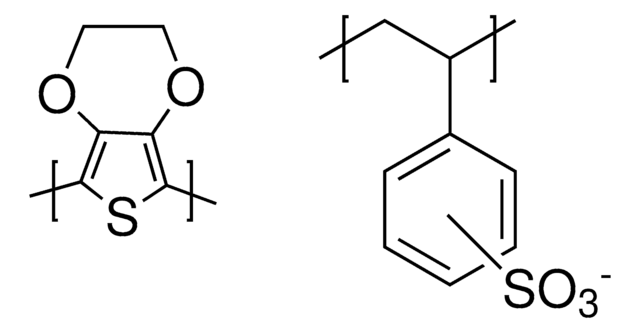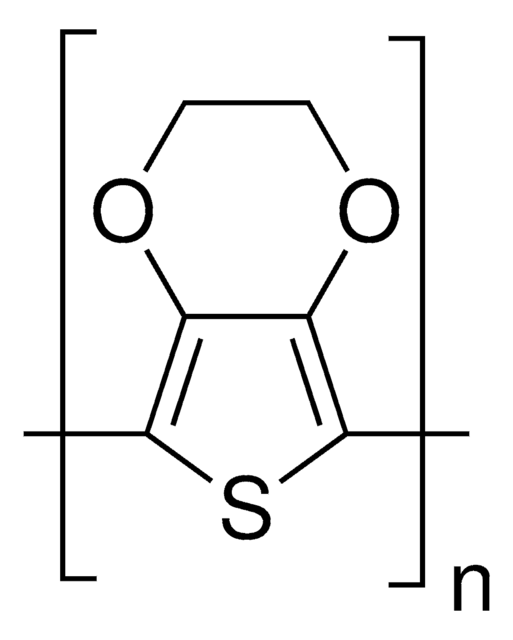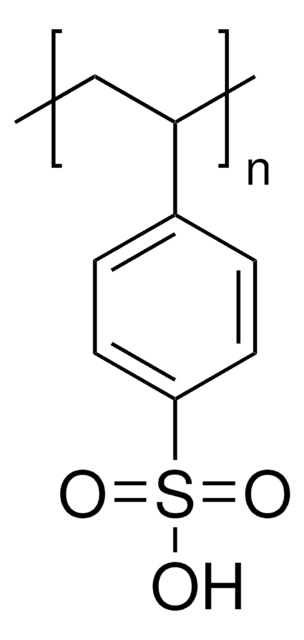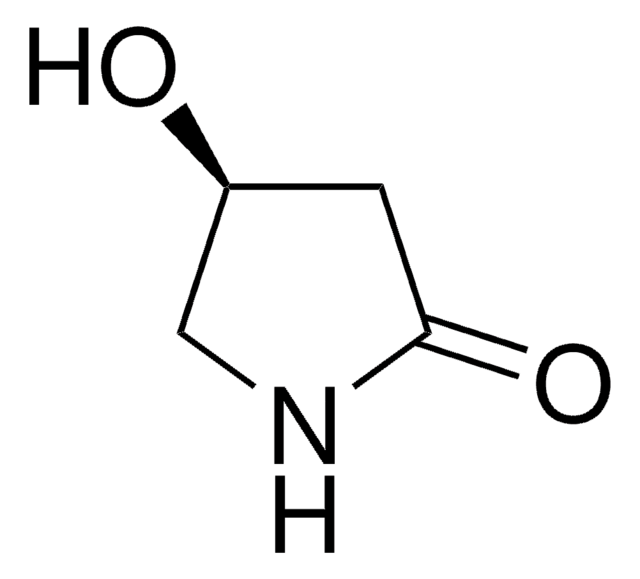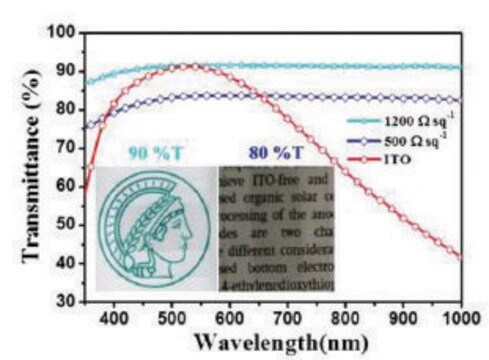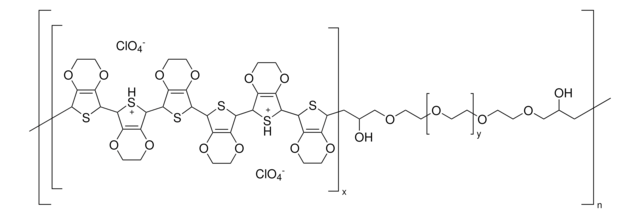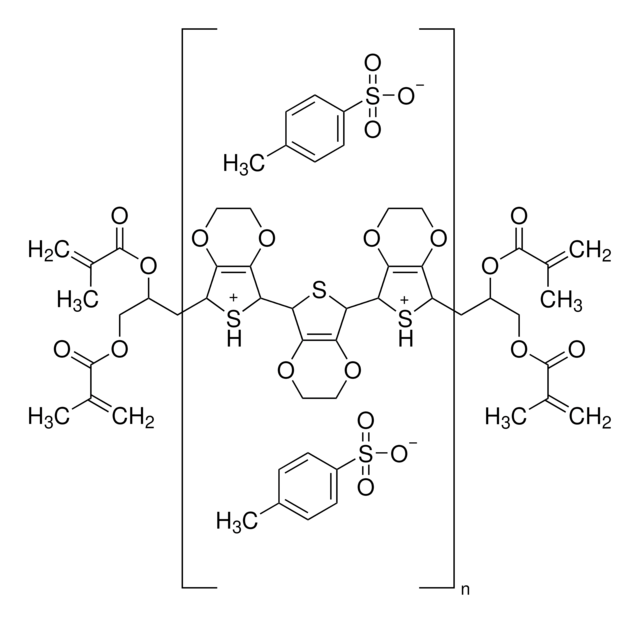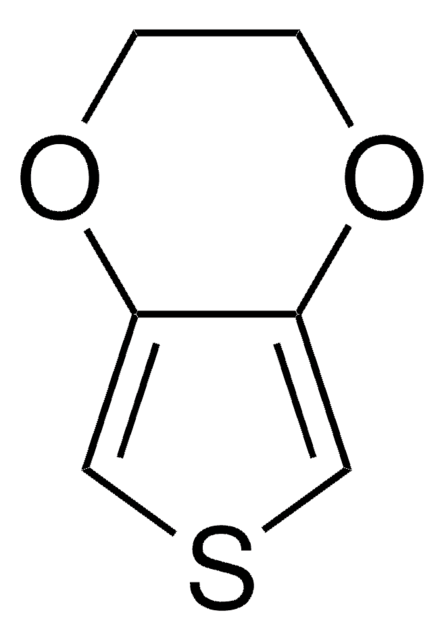483095
PEDOT:PSS
conductive grade, 1.3 wt. % aqueous dispersion
Sinonimo/i:
PEDOT:PSS, Poly(2,3-dihydrothieno-1,4-dioxin)-poly(styrenesulfonate)
About This Item
Prodotti consigliati
Nome del prodotto
Poly(3,4-ethylenedioxythiophene)-poly(styrenesulfonate), 1.3 wt % dispersion in H2O
Composizione
PEDOT content, 0.5 wt. %
PSS content, 0.8 wt. %
Caratteristiche più verdi
Design for Energy Efficiency
Learn more about the Principles of Green Chemistry.
sustainability
Greener Alternative Product
Concentrazione
1.3 wt % dispersion in H2O
Banda proibita
1.6 eV
Conducibilità
1 S/cm
Categoria alternativa più verde
Temperatura di conservazione
2-8°C
Cerchi prodotti simili? Visita Guida al confronto tra prodotti
Descrizione generale
Applicazioni
Caratteristiche e vantaggi
Confezionamento
Avvertenze
Danger
Indicazioni di pericolo
Classi di pericolo
Eye Dam. 1 - Skin Corr. 1
Classe di pericolosità dell'acqua (WGK)
WGK 2
Dispositivi di protezione individuale
Faceshields, Gloves, Goggles, type ABEK (EN14387) respirator filter
Scegli una delle versioni più recenti:
Possiedi già questo prodotto?
I documenti relativi ai prodotti acquistati recentemente sono disponibili nell’Archivio dei documenti.
I clienti hanno visto anche
Articoli
Tutorial Lithography Nanopatterning at Sigma-Aldrich. Lithography, based on traditional ink-printing techniques, is a process for patterning various layers, such as conductors, semiconductors, or dielectrics, on a surface.
New conducting and semiconducting polymers for plastic electronics
Find advantages of inorganic interface layer inks for organic electronic & other applications.
Conducting polymers such as polyaniline, polythiophene and polyfluorenes are now much in the spotlight for their applications in organic electronics and optoelectronics.
Il team dei nostri ricercatori vanta grande esperienza in tutte le aree della ricerca quali Life Science, scienza dei materiali, sintesi chimica, cromatografia, discipline analitiche, ecc..
Contatta l'Assistenza Tecnica.
